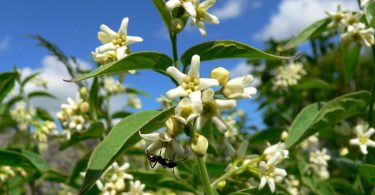Authored by Prof. (Dr.) Goutam DasM.D, (Homoeopathy)
[Abstract: This article includes the clinical understanding of the study of Homoeopathic Materia Medica, on the light of the teaching of our Organon of Medicine & Homoeopathic Philosophy that, whatever it maybe the name of the disease or the pathology; Homoeopath needs to perceive, what is curable in disease and what is curative in medicine; they’re the clinically verified signs & symptoms of a remedy, the power, the essence, the image, the very nature of the sickness; those are only to be counter as stronger & similar in manifestations but different in kind for restoring the sick to health homeopathically, also expressed in this article.]Images of Rhus toxicodendron(Poison oak) trees, contact dermatitis of leaves, (Images.app.goo.gl)

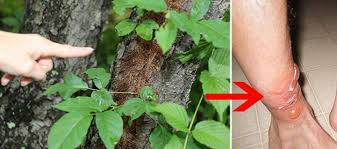
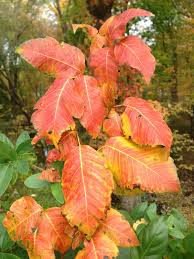
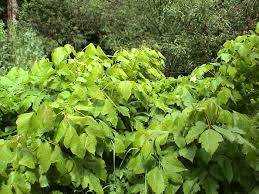
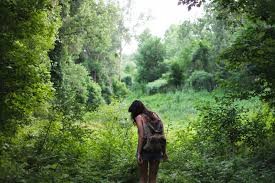
Keywords: Rhus toxicodendron – physical appearances – chemical properties – dynamic actions – prescriable – clinically verified – curative symptoms.
Abbreviation: < = aggravation; > = amelioration; Rhus tox = Rhus toxicodendron.
Rhus toxicodendron Description: ([1] Allen’s Encyclopedia Materia Medica, Vol. VIII. P.330)
Family: Anacardiaceae.
Habitat: North America – United State, Canada; grows in thickest, and low grounds; flowering in June.
Parts used: Fresh leaves are used in mother tincture preparation.
Chemical Properties: Chemicals Active Principle: Urusniol, Toxocondendrol, Toxicodendric acid, a fixed oil; Rhoitannic acid and Toxicodendric acid are poisonous.
Physical Description: The milky juice, turns back on exposure is used as a marking ink and in ingredient of varnishes for finishing boots.
Peculiarities: that, it is more poisonous during night, at bursting into leaf, or at any time in June or July, when the Sun is not shining upon it. Absence of Sunlight with dampness seems to favour the exhalation of Toxicondendric acids, Millspangh relates instances of Rhus.
History & Authority:
1) Rhus toxicodendron, introduced into England as a plant in 1640.
2) In 1798 Dr. Dufrenoy at Valenciennes first used it as a medicine; noticing the cure of a young man of a herpetic eruption of six years by accidentally poisoned with the plant. He successfully used it in eruptive diseases, paralysis, rheumatism and neurosis.
3) Rhus toxicodendron, first used as medicine in 1798, when a French physician found a patient’s herpetic eruption cured by accidental Rhus poisoning. He used the plant to treat herpetic and palsy.
4) Dr. Hahnemann published Rhus toxicodendron proving in 1816 and in a Typhus epidemic in 1813; he had mainly used Rhus toxicodendron and Bryonia alba.
5) Allopathy gradually revived the use of Rhus toxicodendron because of the homoeopathic example, reporting good result in scarlet fever, rheumatism, skin disease, paralysis, and other conditions.
6) The word ‘Rhus’ means ‘red’ because its flowers and leaves are red in colour and ‘toxicodendron’ means ‘poison tree’.
Introduction:
Stiffness, all over the body … joints … jaw … cracking. Emotional level: … spontaneous warmth, expression; some coldness. In love, they prefer the other shows love and affection to them, rather than they showing it. They have fear of being hurt. Become stiff in mental level and get fixed ideas. Main idea – of being stiff and bound up, unable to relax. They feel tendons are stiff and hard, have to move all the time, stretching all the time to loosen them up. Very sensitive in the cervical region; stretching the neck all the time. Great sensitive to draft on the cervical area – get a kind of dullness in the mind and then a kind of sleepiness. < in cold, damp weather (Calcarea phosphorica, Actaea racemosa; Kali. carbonicum not sensitive in cervical area). < from exposure to cold, wet, and rain. Upper edges of trapezoid are mostly affected. Extreme restlessness, get relief from moving. First movement is painful and reliving but momentary and then they have to change positions again. He will be sitting there stretching, moving his legs, feeling as if a vice has caught the part that is stiff. When stiff, applying continuous effort to move (Sepia has of rhythm … expressed through dancing). [2]
KEY POINTS:
1. Aggravation during rainfall and aggravation in rest.
2. Biting pain of limbs and restlessness.
3. Relieve by restlessness, amelioration by heat.
4. Red triangular tip of tongue and coughing at chill stage of fever.
DISCUSSION: [3]
- Tubercular (Psora + Syphilis), Sycosis ++.
- Thermal reaction: very chilly.
- Rheumatic diathesis, septic conditions, scrofulous, rickety; easily sprained by lifting.
Aggravation during rainfall and aggravation in rest: [4]
Aggravation during rainfall:
- Wet in rain water during monsoon – exposer by blowing of wet wind – or living in any marshy area, or damp place if make a person ill, Rhus tox help us.
- This tree grown at marshy area and blooming of its flowers during rainy season, in day light as if innocent but at night one type of poisonous air spread around and all become ill coming near the tree.
- Hence, we should remember that: < in rainy season, < during rainfall and < at night.
- But, Rhus tox here an acute remedy, having not so depth of its action; therefore we needs Thuja occidentalis or Natrum sulphuricum where illness breakout in every rainy season.
- Aliments from filled with rain water, living in damp area or cold water bathing at sweating condition whatever it may be the name of the diseases fever, dysentery etc. Rhus tox is helpful.
- Not only in rani season, any time when we wet in rainfall or long time swimming or ling upon damp ground having the history of illness Rhus tox to be remember with < by cold and < at night.
Aggravation in rest:
- Wherever it may be getting chill by wetting of water or lying on damp ground, Rhus tox patient became sick with biting pain in limbs and unable to stay still or rest; but first motion < pain much more and > from continuous motion are seen.
- So, Rhus tox patient crying loudly saying ‘father … mother’, changing position side to side in bed, says to massage limbs.
- Rheumatic patient feels well till on motion, but during sleep or when sitting for rest all pains became double; then first motion even <, but continuous motion > pain, and > take place from massage of effected part.
- So, Rhus tox patient unable to understand the nature of pain, but when explained then thankfully agree.
- Hence, < rest is an essence of Rhus tox.
Biting pain of limbs and restlessness: [5]
Whatever rheumatism, or urticaria or influenza, or paralysis; everywhere violent biting pain seeing.
- Patient became restless; restlessness > by massage is true but biting pain is not the only cause; mind also apprehensive and anxious.
- As we see continuous motion and massage > bodyache and mental anxiety also > by loudly crying to say ‘father … mother’, as if; can’t have and feels better by loud crying.
- Constant move legs, and feels better by legs movement.
Relieve by restlessness, amelioration by heat: [6]
Relieve by restlessness we already discuss, now > by hot or > by heat applications another essence of Rhus tox.
- Rheumatic pain, pain of carbuncle, pain of inflamed part well > by heat application; patient like to covered, to stay in hot room, likes hot foods.
- Dislike blow of air, even uncovered limbs.
- Coldness < all types of pains and coughing.
Red triangular tip of tongue and coughing at chill stage of fever: [7]
- Red triangular tip of the tongue is a peculiarity of Rhus tox; in-spite of imprint of teeth or coated tongue.
- As we say, aliments from filled with rain water, living in damp area or cold water bathing at sweating condition; biting pain of limbs; < by rest and red triangular tip of the tongue is the essence of Rhus tox.
- In Typhoid; low muttering delirium pricking the bedcover, suspicious, apprehensive, anxious, fear of being poisoning, aversion to take medicine; delirium of daily duties; depression.
- In fever during chill or before chill stage coughing started (Tuberculinum).
- Craving for cold water or cold milk (Bacilinum).
- In black colour Pox, Rhus tox and Arsanic album both are so helpful we know, but should remember Sycosis acts as the base of Pox and as an acute flare-up of Sycosis Rhus tox acts nicely. When Sycosis mitigate and combined with the Psora we have nothing except Arsanic album.
- Itching everywhere there is hairs (Natrum muriaticum).
- Backache > lie down by pressure of hard support (Natrum muriaticum).
Presenting as a patient: [8]
Study the action of Rhus tox first on circulatory system, causes an erythrism, an increase in the circulation … the central organ … the heart. Thus we find it indicated in uncomplicated hypertrophy of that viscus, i.e., hypertrophy not associated with valvular lesions … From the effects of over-exertion, as may frequently happen in athletes and in machinists who wield heavy tools.
- Rhus tox is the remedy in heart disease, usually find with a sensation of numbness of the left arm and shoulder … a weak feeling in the chest, as if the heart muscle were tired, and this < after any exertion … palpitation < when sitting still.
- Rhus tox produces a depression of the system, hence pulse is apt to be so full and strong as we find under Aconite. It is accelerated but … there is apt to be weakness of its beat … often irregular or even intermittent; these are characteristic of Rhus tox, with numbness of the left arm.
Any acute diseases, dysentery, pneumonia, scarlatina, diphtheria where blood poisoning take place with typhoid-like symptoms, indicate sinking of the vital forces, a low type, Rhus tox must be remember.
In typhoid fever, patient has mild temperament. Delirium is of a mild character, not violent. Patient may exhibit a disposition to jump out of bed, or to try to escape, but when he is more or less conscious, he manifests little petulance or irritability. It is not, then, a violent anger that characterizes Rhus tox.
- We notice, delirium with restlessness, not only mental but physical as well. Patient constantly tosses about the bed. He is first lying on one side of the body, then on the other. At one moment he is sitting up, during the next he is lying down. Observe constant desire to move, and > by change of position.
- Beginning of the disease, patient wants to lie perfectly quiet, due to great weakness … perfectly prostrated … indifferent to everything … has hallucinations … fear that he will be poisoned … refuse to take medicines, or foods or drinks.
- Stupor progresses, answering very slowly … a petulant way, but not violent.
- Having severe headache, a sensation of strapped to the forehead … with a rush of blood to the head … sudden flushing of the face … epistaxis, dark colour > the headache.
- Dreams of roaming over fields or of great exertion, as climbing, swimming.
- Typhoid fever may affect the lungs and pneumonia developed with usual cough, difficult breathing, rust sputum, dark brown, dry cracked tongue, imprint of teeth on the tongue.
In intermittent fever, chill begins in one leg, usually in the thigh, or between the shoulders or over one scapula.
- Always important to note the starting the chill (Eupatorium and sometime Natrum muriaticum , chill begins in the small of the back; Gelsemium, it runs up the spine)
- In Rhus tox case, during the chill there is a dry, teasing cough (Cinchona, Sulphur, Bryonia, Sabadilla).
- Along with the external chill there is internal heat.
- Thirst is absent.
- Often, too we find urticarial of skin and fever blisters about mouth.
- Sweat is very general, excepting about the face.
Action of Rhus tox on fibrous tissues, aponeuroses, tendons of muscles, the ligaments about joints and the connective tissue; more profound action on the fibrous tissues.
- Tendons are inflamed due to over-exertion or from a sudden wrenching, as in the case of a sprain.
- From over-exertion, as a musician suffers from pulmonary haemorrage due to prolonged performing on wind instruments, Rhus tox will be his remedy.
- If from violent exertion a patient is seized with paralysis, Rhus tox may be the remedy.
- In sprains, Calcarea ostrearum follows when Rhus tox has relived, but failed to cure.
Rhus tox has general characteristics > of symptoms by continued motion, while experiences < on beginning to move.
- The reason is that, the fibrous tissues become limbered up as the patient continues to move.
- In lumbago, whether patient is better or not may be helpful in the beginning.
- Stiff neck of rheumatic origin from sitting in a draught, rheumatic pains in the inter-scapular region, > from warmth and < from cold.
- There may also be constrictive pains in the dorsal muscles, > from bending backward.
- When the patient has become worm from exercise, and the free perspiration has been checked by rain or dampness.
On cellular tissue: cellulitis in diphtheria, and in orbital cellulitis, with formation of pus. (In Apis mellifica, never produces cellulitis with abscess).
- Another connective tissue inflammation Rhus tox help in the beginning of carbuncle when the pains are intense and the affected parts are dark red.
- Erythema is marked of Rhus tox, rapidly progressing to vesication, often with oedema and finally pus and scabs formed. Cutaneous surface of the eruption is red and angry-looking.
- Eczema of face with oedema, loose cellular tissue about the eyelids with burning, itching and tingling (Apis mellifica, burning and stinging pain), a red line marks the spread of the disease.
- Vesicular erysipelas of scalp, skin of the face, genital organs; parts are dark red, inflammation travels from left to right (Apis, right to left, rosy-red, pinkish or dark purple, thirst-less with oedema).
In scarlatina Rhus tox indicated when child grows drowsy and restless; tongue is red and sometime smooth, unusual symptom here; Rhus tox acts on vital force, depresses the sensorium, showing drowsiness and mild delirium, secretion are acrid; cervical , especially axillary glands are enlarged; weak and emaciated.
Action on mucous membranes, it produces a copious coryza with redness and oedema of the throat. Influenza: aching bone pain all over the body, sneezing and coughing. Cough is dry, < in evening until midnight from uncovering the body; cough from tickling behind the upper half of the sternum; trouble from exposure to dampness.
Colic: rheumatic origin, > bending double and moving about (Colocynth > not from motion).
In eye; conjunctivitis by getting wet (Calcarea ostrearum); iritis, rheumatic or traumatic; glaucoma; orbital cellulitis; ptosis in rheumatic patient.
Otalgia, pulsations in the ear at night, as if blowing, whistling; < when lying down.
Toothache, < by cold; > by worm applications.
Dr. M.L Tyler written: [9]
‘Tearing pains down the thigh during stool’, Farrington says in dysentery and Tyler cure small-pox with this symptom.
Guernsey says, ‘desire to move, or change the position every little while, followed by great relief for a short time… after resting when first moving a painful stiffness is felt which wears off from continued motion.’
He says, ‘a nursing mother may have sore nipples, and when the child begins to nurse, the nipple hurts exceedingly, but on continued nursing it becomes much easier’.
Kent says, ‘Hoarseness on first beginning to sing which wear off on singing a few notes, or wears off after talking a little while.’
Hypertrophy of heart: … from over-exertion – athletes and who handle heavy tools (Arnica), with numbness of left arm and shoulder.
Kent says, ‘instance, hunger without appetite: hungry sensation, or … emptiness in stomach without desire for food. Dryness of the mouth and throat with great thirst… for cold drinks, especially at night… cold drinks bring on chilliness, and bring on the cough.’
Periodicity of Rhus tox … one case where the symptoms returned on the same day – even hour, for sixteen years, till Tuberculinum stopped the trouble (Clark); and another case (Hering) where the burning itching of skin, lasting twenty-four hours, recurred on May 13th each year.
Kent says, ‘when a person was poisoned by Rhus tox it was because he was in need of that poison, and had it been given in a high potency, he would not have been poisoned by contact with the plant.’
Farrington says, paralysis in rheumatic patient, from over-exertion, or exposure to wet, lying on damp ground (Dulcamara), three medicines for paralysis from cold are Rhus tox, Sulphur, Causticum.
Remarks:
Rhus toxicodendron 30C, 200C, 1MC, 10MC are commonly used, as per the interpretation of the demand of the degree of susceptibility of the patient in individual cases.
Bibliography:
1) Boericke W, Organon of Medicine; S. Hahnemann, translated by R. E. Dudgeon; Indian edition, Calcutta, Roy Publishing House, 1961
2) Vithoulkas George, Essence of Materia Medica; B. Jain Publishers Pvt. Ltd., New Delhi, First Indian Edition: 1988, Second: 1990, Reprint: 1998, 2001, ISBN 81-7021-138-7; BOOK CODE B-2546 [2]
3) Bhanja, Prof. K.C., Constitution: Drug Pictures & Treatment; National Homoeo Laboratory, 110 A.J. Bose Road, Kolkata-700014; Third edition: 1993 [3]
4) Bandhyapadhya N, Oushadh pariyachay; HPCO, Calcutta, 12th edition [4, 5, 6, 7]
5) Farrington, E.A., Clinical Materia Medica; B. Jain Publishers Pvt. Ltd., New Delhi; Fourth Edition, Revised and Enlarged by Harvey Farrington; Reprint Edition: 1995 ISBN 81-7021-029-1; BOOK CODE B-2235 [8]
6) TYLER ML, Homoeopathic Drug Picture; B. Jain Publishers Pvt. Ltd., New Delhi, ISBN 81-7021-163-8; BOOK CODE B-2529 [9]
7) ‘Nature of Sickness Bryonia alba, Nux vomica’- by the author
About Author:
Prof. (Dr.) Goutam Das M.D, (Homoeopathy)
Dept. of Organon of Medicine, AJSHMC&RI, Mehsana, (Gujarat)
Examiner & Faculty (U.G. & P.G.), H.N.G. University, Patan, (Gujarat)
Ex. Academic Director & Principal In-Charge, NHMCH&RC, Agra (U.P.)
Ex. Examiner, Homoeopathy University, Jaipur, (Rajasthan)
Ex. Faculty & Examiner (U.G. & P.G.), Dr.B.R.A.Uneversity, Agra, (U.P.)
Ex. Faculty & Examiner JRN RVHMC, Deemed to be University, Udaipur, (Rajasthan)
Ex. Senior House Physician, PCHC&H, Kolkata (W.B.)



